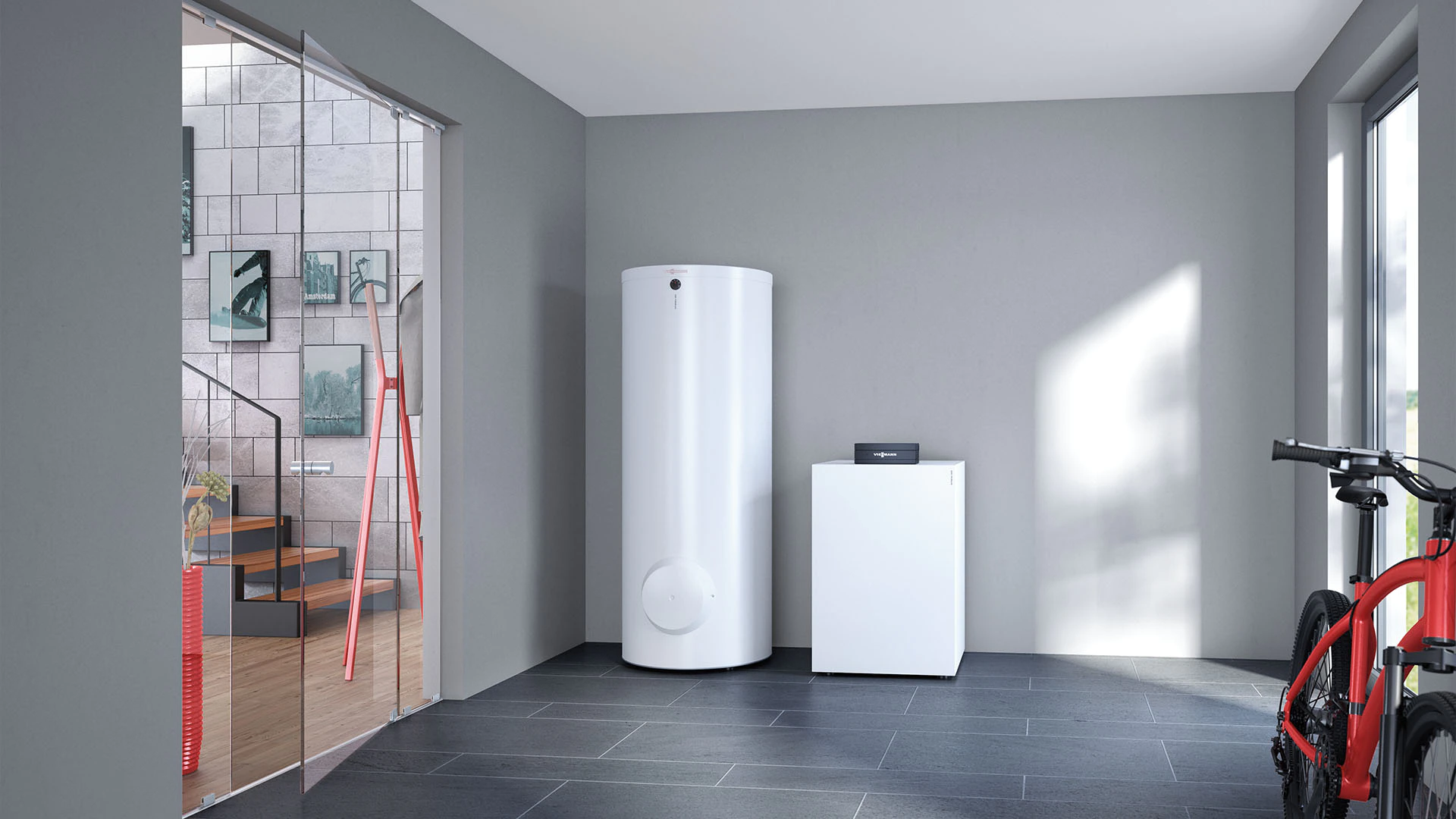Air-source heat pumps vs ground-source heat pumps
What’s the most practical heat pump technology for your house?
Whether you’re building a carbon-neutral dream home, or just looking for an efficient way to replace a gas boiler, a heat-pump could be ideal. More efficient than any boiler, and typically with a longer working life, they can reduce heating and maintenance costs dramatically over more conventional options.
But while many heat pumps get their heat from the air passing over them (air-source), some are installed to extract heat from under the ground – or even from a body of water like a lake. When compared to air-source heat pumps, these ground-source heat pumps have several advantages and disadvantages. So how do they work, and which one’s best for your project?
How do heat pumps work?
Heat pumps work exactly like a big fridge, but in reverse. In a fridge, a compressible refrigerant is pumped around a series of pipes. Inside the cold compartment, this refrigerant absorbs heat from your groceries, causing it to turn into a gas. It’s then compressed, which raises its temperature, and passed through a condenser. This is basically a heat exchanger outside the fridge where the heat is released – that’s why the back of your fridge feels warm. A heat pump uses exactly the same principles, only it’s built to release its heat inside the house.
A modern gas boiler can be up to 90% efficient, and a conventional electric heater is 100% efficient. However, because a heat pump is primarily moving heat rather than generating it, it can be around 300-400% efficient. In other words, for every kilowatt hour of electricity it uses, it could bring 3.5kWh of heat into the home, a coefficient of performance (CoP) of 3.5.
A heat pump installation either uses this energy to heat air that’s blown around the home (air to air), or transfers it to the heating and hot water system (air to water). For this reason, a heat pump can be a great replacement or alternative to a gas boiler, but its output temperature can be significantly lower – around 50℃. This is why heat pumps are often seen as the ideal heat source for use with wet underfloor heating, and it’s also why heat-pump installers may specify larger radiators and hot water tanks than a conventionally fired system.
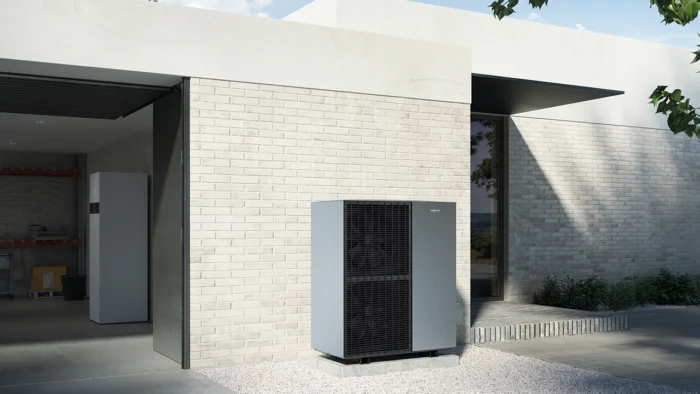
This lower flow temperature has meant that heat pumps weren’t always suitable to heat older, less well-insulated properties, but high temperature output heat pumps are now widely available. These can heat water to similar temperatures to a conventional boiler, although their efficiency does drop as you turn the temperature up, which can have an impact on a heat pump’s running cost.
In October 2023, the government increased to £7,500 the grant available for installing a heat pump through the Boiler Upgrade Scheme. However, you only qualify if you own the property you’re applying for, and if you’re replacing a fossil fuel system. There’s no grant for heat pumps in a new build.
Scottish homeowners can get a Home Energy Scotland Grant of up to £7,500 towards a heat pump, or £9,000 if they live off the gas mains. Unfortunately, Northern Ireland’s Boiler Replacement Scheme has now closed to new applicants.
What are the outdoor components of air and ground-source heat pumps?
The heat for a heat pump needs to come from somewhere. In an air-source heat pump (ASHP), it comes from air that’s blown over the heat exchanger by a fan. In ground-source heat pumps (GSHPs), it’s typically absorbed from the ground by refrigerant running through a series of buried pipes. A GSHP can also work with an open loop system that directly extracts heat from a pond or other source of water, although this system is known as a water source heat pump.
The pipes of a closed loop GSHP can be laid horizontally and buried in trenches just over a metre deep. A single pipe loop might need around 600 square metres of land, but larger buildings may require a second loop. It’s an expensive job, costing up to a few thousand pounds just to dig the trenches, and it can be disruptive to lawns or other land.
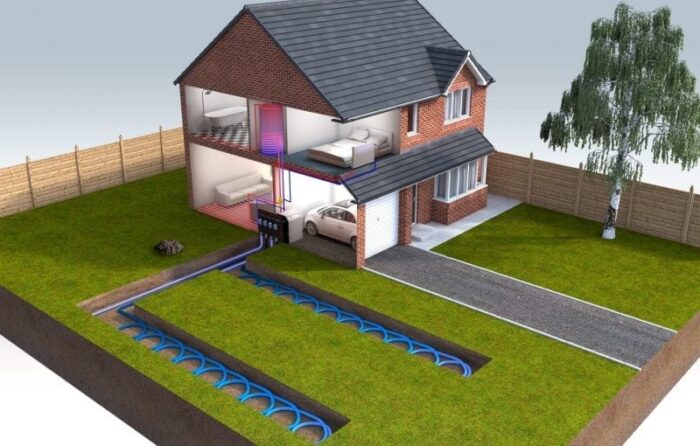
It’s also possible to lay GSHP pipes vertically in boreholes. This is ideal if there isn’t enough land for a horizontal trench, or you just want to avoid major disruption, but it can be fearsomely expensive – usually costing anywhere from £10,000 to £60,000.
By contrast, ASHPs usually comprise a single, self-contained outdoor unit. Although they’re cheaper and easier to install, they’re noisier, and more visible from outside the property.
What about indoors?
All heat pumps have some internal components. Air-to-air systems use simple air handlers, which blow out heated or cooled air in one or more rooms. Wet ASHP systems typically have an indoor coil where warm refrigerant exchanges its heat with the home’s hot water and heating systems. A GSHP is usually installed entirely inside the home, so it needs the most interior space.
As we mentioned, with any system there may be a need to upgrade the building’s insulation. An existing wet system may also need a bigger water tank or radiators, and most installers will recommend replacing any microbore heating pipework (below 15mm diameter).
Heat pumps also need a fairly heavy duty electrical connection and fuse, primarily because they have a high inrush (start-up) current. But in general use, an 11 kilowatt (kW) unit might use up to 2-3kW of power.
What are the advantages and disadvantages of air and ground-source heat pumps?
Air-source heat pumps are generally much cheaper and easier to install than a GSHP. They don’t need a lot of outside space or expensive earthworks, and they usually don’t require much extra space indoors. The £7,500 government grant should cover most of a typical ASHP upgrade to a domestic gas heating system – you’ll only need to pay the remainder, likely to be from £1,000 to £5,000.
Ground-source heat pumps use largely the same technology, but they cost much more to install thanks to the necessary pipe-laying work. They can set you back anywhere from about £15,000 to £50,000, against which a £7,500 grant is obviously less helpful.
Despite their extra cost, GSHPs have some advantages. Ground-source heat pumps tend to be quieter than ASHPs, and they don’t have an unsightly external unit to spoil the look of your property. On the flip side, that means you have to find more space for them indoors – an outbuilding, basement or garage could be helpful here.
Air-source heat pumps are more sensitive to weather than GSHPs. While an air source heat pump produces plenty of heat even in exceptionally low temperatures, they have to work harder to do it. This means that the heat pump’s CoP might drop – say from 3.5 to 2.5 – meaning they’ll use more energy for the same amount of output. By contrast, the temperature underground varies very little throughout the year, so GSHPs are largely unaffected by weather and the seasons.
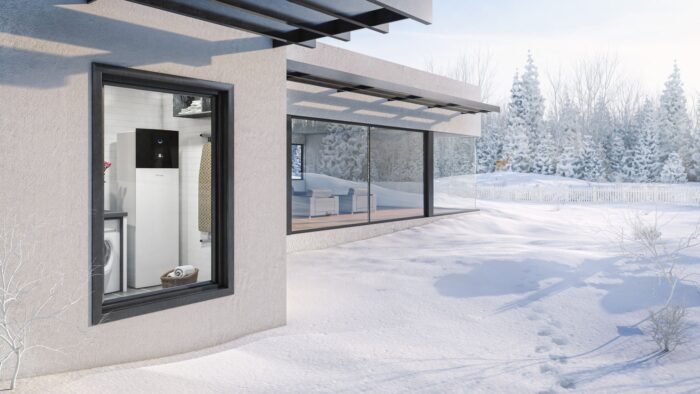
When calculating running costs, it’s best to use the seasonal performance factor (SPF), which specifies performance across the full heating season. In the UK a typical SPF for an ASHP is 2.8. During 2018-19, the Fraunhofer Institute in Germany measured an average SPF of 4.1 for GSHPs. In practice, this could mean that a ground-source heat pump costs about 40% less to run, but it’s best to ask a heat pump system designer for more specific figures.
Do I need planning permission for a heat pump?
All heat pumps are considered permitted development on a residential property, although you’ll probably need planning permission in a listed building. But ASHPs have additional restrictions. You’ll need permission to install one within one metre of your property boundary, which could be a particular issue in a city setting. This rule is set to be scrapped by the government
You’ll also need permission to site one on a pitched roof, within a metre from the edge of a flat roof, or fronting a highway if the property is in a conservation area. One final gotcha is you’ll need permission to install an ASHP if you already have a wind turbine.
Once installed, a GSHP also has almost no visual impact on your property, so they’re a great choice for buildings or projects where it would be hard to conceal an ASHP, or its noise.
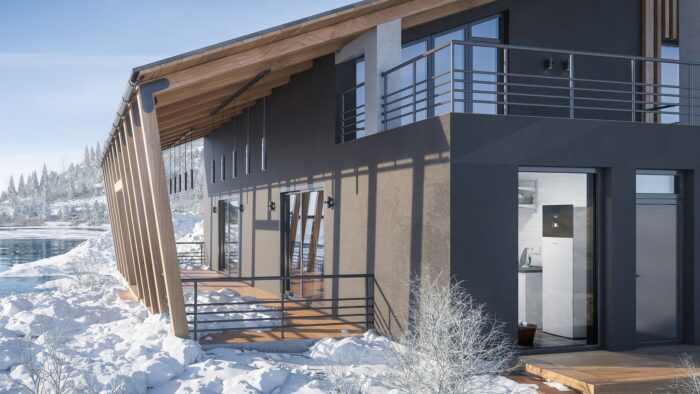
Both types of heat pump offer big advantages over conventional heating. They’re as carbon-free as the electricity you use to power them, so they can be a great partner for microgeneration such as solar panels. Their efficiency means they’re less damaging to the environment even if they’re powered by non-renewable electricity. And they’re particularly useful for rural properties that would otherwise rely on expensive and polluting heating oil.
Will a heat pump save me money?
As an upgrade to storage heating or other electric systems a heat pump would almost certainly save you money, as it’s likely to be at least three times as efficient. It’s also likely to cost less than heating with oil.
Using Energy Saving Trust figures for the average energy prices in November 2023, every kilowatt hour (kWh) of heat from an air-source heat pump would cost 9.8p, assuming a standard electricity rate of 27.4p and a SPF of 2.8. From a GSHP with an SPF of 4 it would be 6.8p per kWh of heat. You’d pay 10p to get the same output from a 90% efficient oil boiler, and 27.4p if you were using direct electric heating.
The balance shifts further towards heat pumps if you can use off-peak electricity. A kilowatt hour of heat costs 16.4p if using off-peak storage heating, but just 5.8p from the ASHP specified above, and 4.1 from the GSHP. If you do have a source of microgeneration, its output will go 3-4 times as far with a heat pump than if you’re using it to power an immersion heater or another direct electric heat source.
At current prices, heat pumps cost about the same as, or a little less to run than a boiler fired by mains gas. A condensing boiler comes in at about 8p per kWh of heat at optimal (90%) efficiency. However, older boilers – and modern boilers set up with too high a flow temperature – may cost a penny or two more.
The government has long been trailing its intention to shift so-called green levies from electricity to gas, which could lower the cost of electricity and raise the cost of gas, pushing the maths further in favour of heat pumps. Regardless, if your main objective is reducing carbon emissions, and particularly if you have renewable electricity, heat pumps are simply unrivalled.

